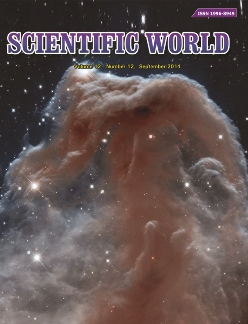COMPUTATIONAL PREDICTION OF CHEMICAL SHIFTS OF APO-STATE OF THE PROTEIN CALBINDIN D9K
DOI:
https://doi.org/10.3126/sw.v12i12.13561Keywords:
Protein, Calbindin D9k, Amino acids, Molecular Dynamics Simulation (MD), Chemical shift, Sparta , Protein Data Bank, AMBER12, TIP3P water model, Langevin dynamicsAbstract
Calbindin D9k is a small protein. It is found predominantly in tissues involved in the uptake and transport of calcium such as cells of the intestinal brush border membrane. Molecular dynamics simulation (MD) of the protein also helps to study motion and its development with time which may not be studied experimentally. Chemical shifts are also calculated from the data generated by MD using various chemical shift prediction tools such as Sparta+. Chemical shifts are most often used to predict regions of secondary structure of proteins, to aid in the refinement of complex structures, and for the characterization of conformational changes associated with partial unfolding or binding. We used AMBER 12.0 software on GPU to simulate the apo-state of the protein using water model TIP3P and the force field ff12SB and then Sparta+ was used to predict chemical shifts values for backbone atoms. These values are then studied with the values obtained from its initial structure.
Scientific World, Vol. 12, No. 12, September 2014, page 5-8




